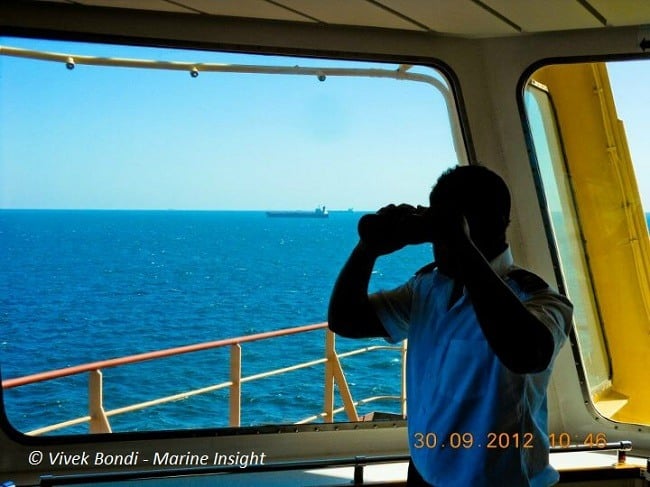

A deck officer assigned with the duties of watch keeping and navigation on a ship’s bridge is known as the officer on watch (OOW). While keeping a watch on the bridge he is the representative of the ship’s master and has the total responsibility of safe and smooth navigation of the ship.
Officer on Watch (OOW) is also in charge of the bridge team, which is there to support him in the navigation process. He is also responsible to ensure that the ship complies with COLREGS and all the orders of the master are followed with utmost safety under all conditions. The three main duties of an officer on watch (OOW) can very broadly, for the sake of understanding only, can be classified under:


A list of main duties of an officer on watch (OOW) is provided below. However, this is not an exhaustive list and the duties may change according to the requirements. The following constitutes the aspects required to be checked and monitored after having taken over the watch (to know more about taking over the watch, read https://www.marineinsight.com/marine-navigation/8-important-points-for-efficiently-taking-over-a-bridge-navigational-watch/) Therefore, soon after taking over the watch:
Additionally, the OOW must keep the following in mind:
All that is mentioned above is a generalised approach to the duties of the OOW on bridge. The full extent of such duties cannot be covered entirely as the a lot of factors may be added as per the type of the ship. For example, on tankers the IG related information has to be monitored and therefore, adds to the existing duties. The idea is for the OOW to be fully conversant with the type of the ship and all the duties that go with it. As mentioned above, the dynamic nature of it all makes the OOW’s duties dynamic as well.










We believe that knowledge is power, and we’re committed to empowering our readers with the information and resources they need to succeed in the merchant navy industry.
Whether you’re looking for advice on career planning, news and analysis, or just want to connect with other aspiring merchant navy applicants, The Marine Learners is the place to be.